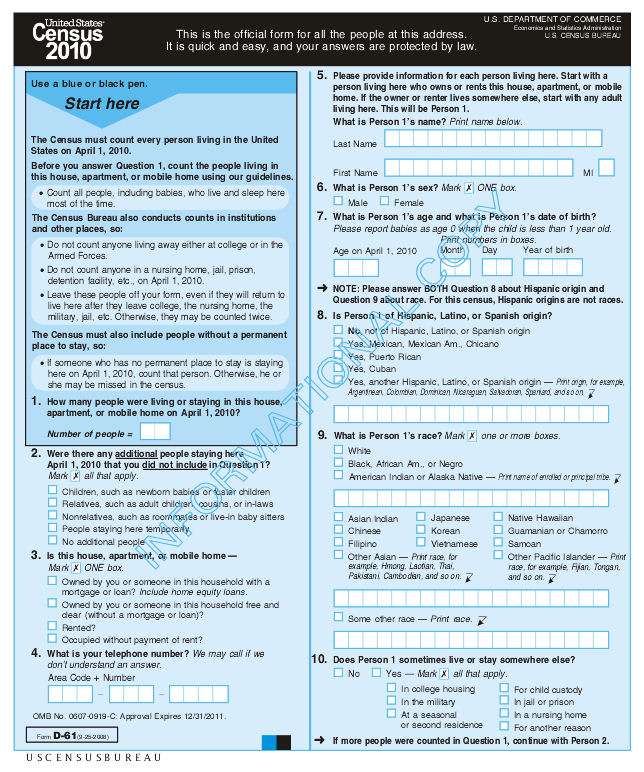2020 Census gives opportunity for schools to receive more money
An old Census form from 2010 shows an example of how Census forms will look.
On April 1, households across the country will receive a letter or door knocker looking for families to answer personal questions about their lives. Officially, Census Day is April 1, but the collection started in Alaska on Jan. 21.
Instruction letters are expected to arrive around mid-March specifying the possible ways to participate in the census. The information can be collected online, on a paper form, through 1-800 numbers or in some rural areas, a Census worker might make home visits.
The Census includes every person who is living in the United States, ignoring international visitors. The data collection depends on where a person lives and sleeps.
The 2020 Census is the first census to allow online and phone information collection. The collection is required by the Constitution to occur once a decade, making this collection even more important.
It started in 1790 after the Constitution called for an “actual enumeration.” Additionally, the Census affects the number of seats each state gets in the government.
Census information affects businesses, Congress and other government-run facilities. Businesses use demographic data to determine locations for new buildings.
The Census is vital for redistribution of funds and it also affects seats in Congress. If the Census shows that the population in Pennsylvania changed, then the number of Congressmen and women representing the state could increase or decrease depending on the numbers.
The effect that the Census has on schools is one of the most important factors to know about. Since the Census has an impact on how funds are distributed, it impacts how much money communities and receive for programs such as special education, food service and health programs.
Without participation in the Census, the government will not be able to redistribute funding.



